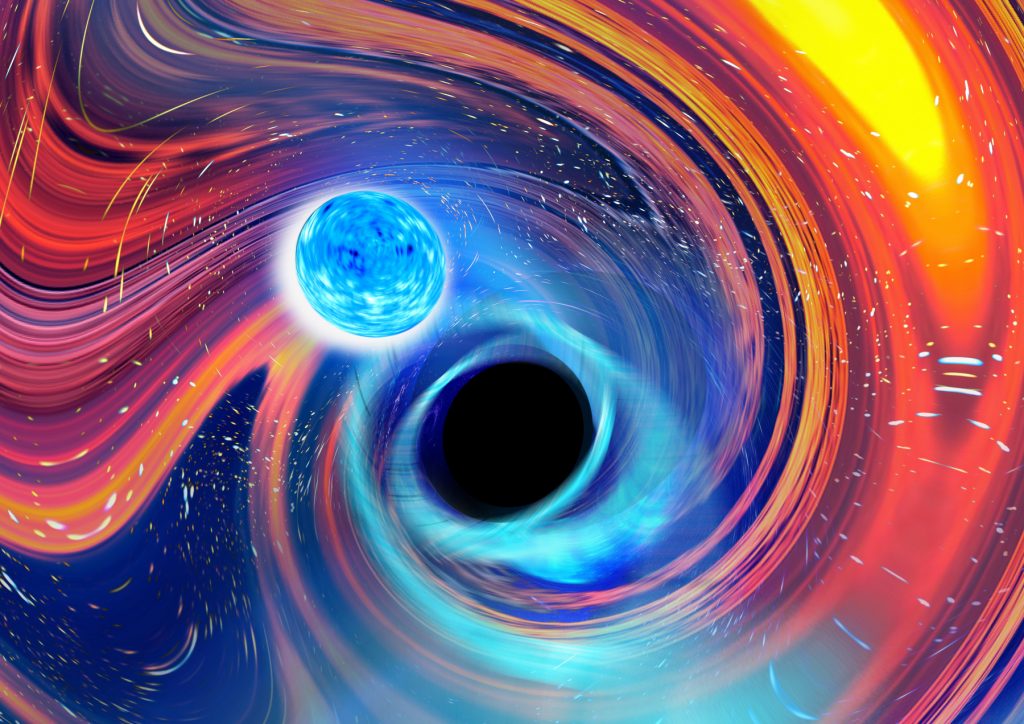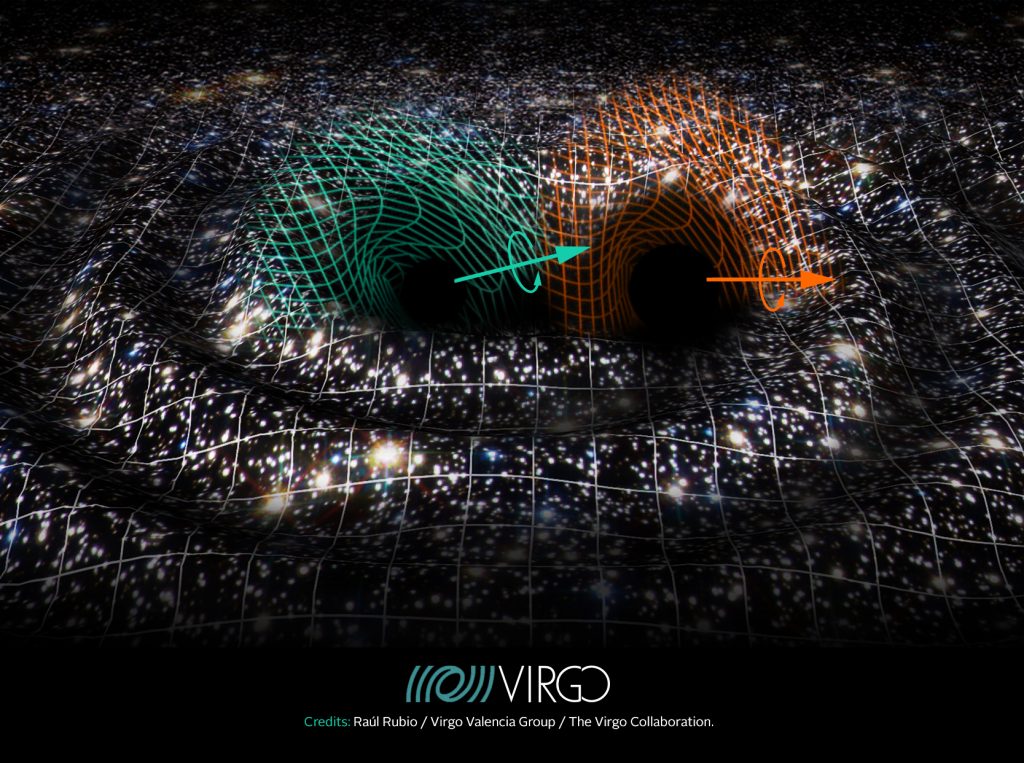Astrophysical Sources of Gravitational Waves

Astrophysical sources of gravitational waves can be classified in terms of the type of the signal they emit. In this regard there are three main types of signals: transient, continuous and stochastic.
Transient signals can range from being very short (a few milliseconds) to lasting several minutes. They are generated by events which are intrinsically short in time such as the gravitational wave burst expected from a supernova explosion, as well as events which last very long periods of time but which Advanced Virgo can only observe in the final stage, as compact binary coalescences (CBC), that is mergers of binary systems of black holes or neutron stars.
Signals which are long-lived in time, with durations of months or years, can be classified as continuous. These signals are generally weaker with respect to compact binary coalescence signals; however the fact that they last for long periods of time allows us to accumulate the signal in long stretches of data which increases the chances of detection. Continuous signals can be emitted, for instance, by non-axisymmetric spinning neutron stars: the asymmetric could either be because they depart from a perfect sphere (and thus have some “mountains” at their surface), or because of an oscillating perturbation of their inner structure. Continuous gravitational waves have been never detected so far; however they are anticipated to be detectable by the Advanced LIGO and Virgo in the upcoming runs, or by one of the future detectors. Quasi-periodic signals could also be emitted by ultra-light boson-clouds, a possible constituent of dark matter, orbiting around stellar-mass black holes.
A third type of signal is the stochastic background: this is the result of the incoherent sum of numerous gravitational wave signals too weak to be detected individually. The stochastic background can be generated by the overlap of gravitational signals coming from a myriad of astrophysical sources, close or distant, young or old, too faint or too distant to be detected individually. Detecting it, which might be at the reach of the Advanced LIGO and Virgo network in the next observing periods, would give insights on star formation history and the evolution of astrophysical sources.
There could also be a cosmological, rather than astrophysical, gravitational wave background: according to the theory of Inflation it was generated right after the Big Bang. This cosmological background could be within the reach of the next generation of gravitational wave detectors.
Coalescence of compact binary systems

A compact binary system is composed of two compact objects: examples are a Binary system of two Neutron Stars (BNS) or a Binary system of two Black Holes (BBH) or a mixed binary system of a neutron star and a black hole (NSBH), orbiting around each other; this is a typical source of gravitational waves. As the system evolves with time, the two compact objects inspiral faster around one another and get closer and closer until they eventually merge, because the system loses energy through the emission of gravitational waves. This phenomenon is known as coalescence. As the two bodies approach one another, the waves that are generated increase in frequency and amplitude. This type of signal is called a “chirp”, in reference to the chirp sound made by birds.
These signals are identified by three phases: first the objects are far apart but swirling around each other (inspiral), then when the orbits decay they plunge one towards the other until finally they merge. During these last stages of the orbital decay the gravitational waves are strong enough to be observed in the frequency sensitive band of Advanced Virgo: depending on their masses, we can observe from a few up to many hundreds of orbits of the coalescing bodies around one another.
The first direct observation of gravitational waves was GW150914 (on the 14th of September 2015), the coalescence of two black holes of masses 36 and 29 times that of our Sun, merging at a distance of 1.3 billion light-years from Earth.The first detection involving data from the Virgo detector was GW170814 (on the 14th of August 2017), which was also the first one detected by a network of three detectors (Virgo, LIGO Hanford and LIGO Livingston). Learn more here.
And more…
Each time humans have observed the sky with novel instruments, explored new ranges of electromagnetic wavelengths or utilized additional messengers from the cosmos, new objects and phenomena have been discovered. When looking for gravitational waves, we are also expecting surprises!
For instance cosmic strings are “defects” in the fabric of spacetime which might have formed during the evolution of the Universe. These strings have never been observed, but are expected to emit gravitational waves if they exist. Maybe Advanced Virgo will allow us to detect such phenomena for the first time. Cosmic strings are just an example of more ‘exotic’ gravitational wave sources. There are many other theoretical gravitational wave sources whose signals have not yet been observed (but just theorized): gravitational waves leaking out from black hole mimickers, ultra-light boson clouds forming around spinning black holes and others. All of these would represent amazing scientific breakthroughs but probably the most exciting sources we could detect with gravitational waves in the future are those that we can’t yet predict at all, and that will catch us by surprise completely.